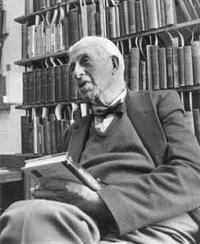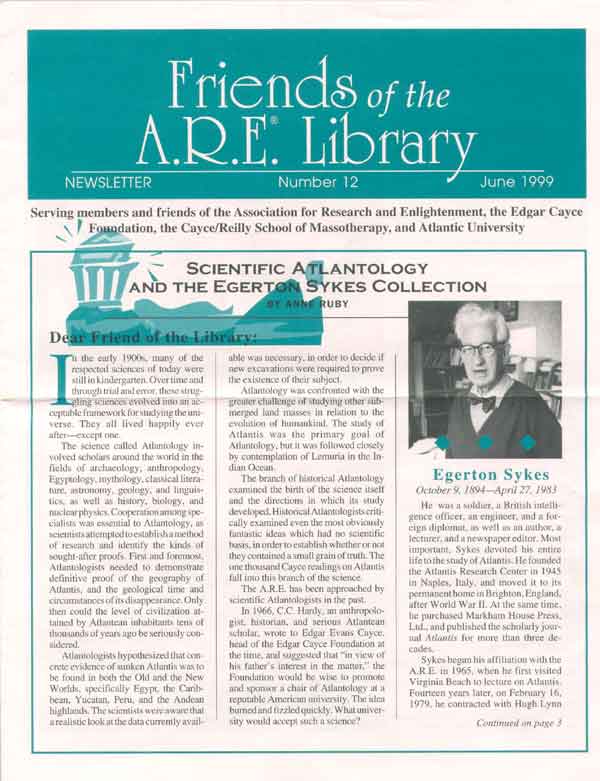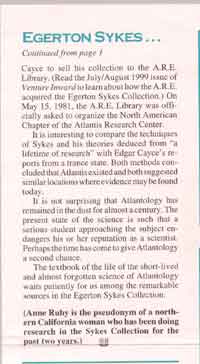Scientific Atlantology
Early Atlantology Highlights
Early Atlantology
Plato’s Dialogues Timaeus and Critias, written between 429 and 347 BC, and the more than six-hundred flood legends around the world, are not proven to be of historical value. Unfortunately, the only historic document about Atlantis is Plato. Plato was accused, beginning with his pupil Aristotle, of inventing Atlantis for propaganda purposes. The fantastic incredibility of the location of a continent or island in the middle of the Atlantic Ocean, and the presence upon this land mass of a civilized people while simultaneously the rest of humanity was still in a state of savagery, was a big pill for disbelievers to swallow.
For quite a long time, scientists investigated the possibility that North Africa, including the Sahara Desert, formed part of or was contemporary with Atlantis. In 1814, Ali Bey El Abbassi (or Domingo Badia y Leyblich) wrote a book on The Ancient Island of Atlantis and the Possibility of an Interior Sea in the Center of Africa.
The discovery of America with its gigantic ruined cities in Yucatan, Peru, and the Andean Highlands fired the early Atlantologists to much research and the writing of books — a process which dwindled until the middle of the last century when Ignatius Donnelly arrived on the scene.
Minnesota congressman, Ignatius Donnelly, author of the 1882 overnight best seller Atlantis: The Antediluvian World, is known as the Father of the Science of Atlantology. In 1883, he published Ragnarok: The Age of Fire and Gravel. Donnelly was a Republican Minnesota Congressman with an encyclopedic mind who studied law but preferred poetry. Unlike other members of Congress, Donnelly logged in many hours in the Library of Congress, and a short time into retirement he produced his first book Atlantis: The Antediluvian World. The best response to the book was not in America but in the United Kingdom. Four-time Prime Minister of Britain, William Ewart Gladstone, wrote to Donnelly to congratulate him on his book and in 1882, Gladstone asked the Cabinet to produce funds for the sending of a ship to trace out the outline of Atlantis. Gladstone failed to secure the necessary support from the Treasury.
Donnelly’s time was not ripe for the unreserved acceptance of the hypothesis of a land mass suddenly lost in the Atlantic Ocean, chiefly because geophysical theories were unable to supply physical presuppositions for such a loss. Donnelly’s books did not evoke new research but provided the blueprints for the general method of study of Atlantology. The science of Atlantology was fundamentally hampered from progress until Hoerbiger and Sykes, who offered theories which could convincingly explain the sudden catastrophic loss of Atlantis.
In 1907, Etienne Felix Berlioux wrote a series of papers entitled Morocco and the Atlanteans for the Academy of Sciences at Lyons.
Professor Wladimir Bogachev was a distinguished geologist who may be described as the Father of Atlantology in Russia. In 1910, Bogachev was a lecturer at the University of Dorpat, Estonia, and in 1912, he published a brochure Atlantida, the first work on the geology of Atlantis to be printed.
On October 20, 1912, Paul Schliemann’s sensational article on Atlantis was published in the New York American, a publication of Hearst Press. Paul claimed that his famous grandfather, Heinrich Schliemann, began investigating the myth of Atlantis in 1883, seven years before his death, and Paul had inherited Heinrich’s confidential research, as well as funding to continue the work. Young Schliemann’s complete silence after 1918 confirmed the view generally held that he must have died during World War I. The article was believed by many to be a hoax, as not one single member of the Schliemann family uttered a word either in favor or against the story.
In 1926, R.M. (Rene-Maurice) Gattefosse, Jean Gattefosse, and Claudius Roux published the famous bibliography of Atlantis Bibliographie de L’Atlantide.
Differing Approaches
Lewis Spence once said, "I still assert with all the emphasis at my command that unless the iron discipline of scientific detachment be recognized in the consideration of such questions as the Atlantean, its study might as well been abandoned. For me there are two Atlantises — the Atlantis of fantasy and imagination, and that of reality. Sometimes these ideas appear to fuse, at others they are as far apart as poles.”
Spence’s 1924 The Problem of Atlantis and 1925 Atlantis in North America evoked interest in the subject in the Anglo Saxon world. Spence also formed his Atlantis Research Center and published Atlantis Quarterly, which closed down after five issues.
On June 24, 1926, Paul Le Cour and Roger Devigne created the Society for Atlantic Studies at the Sorbonne in France. Shortly afterwards, Les Amis d’Atlantis broke up into two Atlantis study groups: one based on Le Cour’s mystical approach; and the other on Devigne’s more pragmatic approach.
In 1960, after three decades of disagreement, Sykes’ research finally supported the readings of the famous American prophet, Edgar Cayce (1877-1945), that Bimini was likely one of the best places to find records of Atlantis. Sykes corresponded with Edgar Cayce by letter in 1935 and 1936 about the Bimini complex. Cayce’s readings are preserved at the Association of Research and Enlightenment (A.R.E.) in Virginia Beach, which is also the present home of the Egerton Sykes Collection. Besides pointing to Bimini first, all seven-hundred Cayce readings on the subject of Atlantis admirably balance Atlantis and Diffusion. Cayce’s words also offer a step toward a greater comprehension of what Atlantis really means to humankind. The Cayce material teaches that philosophy, theology, and science are not like oil and water, but have an affinity for each other, and are indispensable to one another. Cayce makes it clear that philosophy and science, as separate ways of thinking, will not stand the test of life and experience. Unfortunately, the majority of conventional scientists dismiss Cayce’s unique methodology without a second thought.
Location of Atlantis
Africa
Between 1910 and 1932, Leo Frobenius, the famous German anthropologist, made no less than ten African voyages. During an excavation in Nigeria in the palace compound of the chief of the ancient Ife culture, he discovered outstanding works of art in the form of remarkable bronze heads and terra cottas — portraits of individuals which displayed an astonishing degree of realism not found elsewhere in African culture. Frobenius believed the Ife to be an important culture which succumbed to climatic conditions.
Pierre Termier’s Atlantide of 1913 and La Derive des Continents of 1924, were two of the most important scientific works on the subject in the early half of the century.
It was Pierre Benoit’s novel Atlantide, first published in 1920, which stimulated many expeditions to Africa. Benoit’s novel told of the adventures of some French officers seeking for traces of Atlantis in the wastelands of North Africa, where they encountered the legendary Atlantean Princess Antinea.
In 1925, F. Butavand wrote La Veritable Histoire de l’Atlantide, in support of his thesis that Atlantis had originally been a series of islands, now submerged, lying off the Tunisian coast — the site where Carthage and Utica were later founded and built.
In 1929, Professor Paul Borchardt of Muich, a geographer and explorer, claimed to have found Plato’s Atlantis at a North African site in the Mediterranean Sea between the Schott el Dejrid and the Gulf of Gabes, and aided by Dr. Albert Herrmann of the University of Berlin, assigned the whole of the Atlantis story to a small locality near Tunis.
In Italy, it was inevitable that Italian interest in Atlantis should be focused on the Tyrrhenian Sea and North Africa, rather than the distant Atlantic. Dr. Nicola Russo, Chairman of the Italian Atlantis Society and editor of the its journal Atlantide in Italia, which appeared from 1930 to 1932, wrote several papers on the subject. Unfortunately, the Society’s activities were suspended in the immediate pre-war years of World War II due to the pressure of domestic politics; however, in 1956, interest in Atlantis was revived in Italy with the formation of the Centro Culturale Atlantide in Genoa. The group published La Voce d’Atlantide edited by Gianni Belli of Genoa from 1956 to 1958. In 1963, the Italian Atlantis was published in Genoa by Mr. Leonardo Bettini, a member of the Atlantis Research Center.
In 1933, Lieutenant Brenans of the French Camel Corps discovered the magnificent Tassili petroglyphs in the middle of the Sahara Desert. In 1959, Henry Lhote published The Search for the Tassili Frescoes, the Rock Paintings of the Sahara, the story of the sixteen months spent by the author and two different teams searching for and copying some of the most wonderful rock paintings in the world. The vast size of some of the frescoes show the importance of ritual art in the life of the nomadic people in the days before the Sahara had been turned into a desert.
In 1948 in French North Africa, a new organization came into existence called L’Atlantide de Demain, headed by Amedee Guiraud. The group published a quarterly journal En L’Atlantide. The objective of the new group was to establish a link between North West Africa and Atlantis, and to bring the whole area back to the conditions of fertility and prosperity which existed in the time of Atlantis.
In 1956, Zaki Saad of the Egyptian Department of Antiquities reported discoveries in the neighborhood of Cairo, showing that the then capital of Egypt was a flourishing metropolis of about a million people before the First Dynasty, and had roots stretching back at least two thousand years before then.
Europe
In 1920, Alfred Watkins, an expert photographer and inventor of the Watkins Exposure Meter, began noting on 1" and 6" Ordnance Survey maps of the British Isles, the numerous alignments of ancient sites. Watkins concluded that, before Roman times, members of an unknown race accurately surveyed the land, leaving markstones and circular mounds, whose alignments came to be known as leys or straight tracks, ranging in length from three to one-hundred miles. In 1927, Watkins, founder of the Straight Track Club (1926-1949), published The Ley Hunters Manual, a ninety page book containing one-hundred-and-twenty photographs and site diagrams of markstones and their ley lines.
On November 17, 1949, Pastor Jurgen Spanuth wrote a letter to Sykes to notify him that the race for Atlantis was finally over. Spanuth was certain he had located the remains of Plato’s lost continent five miles south of Helgoland in the North Sea.
Professor Rene Malaise published Atlantis en Geologisk Verkzighet in Stockholm in 1950.
In April 1952, scientists reported the discovery of three-hundred human skeletons in a deep cave in the Pyrenean district of southwest France. There was a stalagmite growing out of a hipbone, verifying the calculated dating of up to 15,000 years old.
In 1960, Professor Angelos G. Galanopoulos, a seismologist at Athens University, announced that the Santorini volcanic explosion of BC 1400 destroyed the civilization of Minoan Crete, and the island contained the remnants of Atlantis . Mr. James V. Mavor of Woods Hole Oceanographic Institute supported the theory in his 1969 book Voyage to Atlantis. Sykes thought the Santorini theory to be purely political, and designed to prove to the world that Greek influence of the Eastern Mediterranean antedated that of the Turks.
Caribbean & Atlantic
In 1927, the Caribbean explorer F.A. Mitchell-Hedges discovered the famous, exquisitely carved, eleven pound, life-size skull with a moveable jaw, cut from a block of rock crystal, in a Mayan temple in Lubaantun, British Honduras. Microscopic examination of the surface for grinding patterns showed no evidence of tools. Rock crystal was believed by the ancients to be frozen holy water that never melted, a form of supernatural white magic, and the flaws in the crystal to be the souls of a host of guardian angels.
Professor Hans Pettersson, leader of the Swedish Albatross expedition, which extracted hundreds of samples from the bottom of the Atlantic Ocean in the 1930’s, stated that the Mid-Atlantic Ridge was mainly above water 15,000 years ago. A similar conclusion was reached by the German Gauss expedition, which sounded the Romanche Deep in 1901. In 1936, Maurice Piggot’s famous U.S. Coast and Geodetic Survey of deep core soundings showed definitively that the Mid-Atlantic Ridge reached above the surface of the sea 10,000 to 20,000 years ago. Different sediment deposits on each side of the Ridge showed that the Ridge once separated two currents, and there are heavy deposits of volcanic ash on both sides which, according to carbon dating, were deposited 12,000 years ago.
In 1951, the Cuba Institute of Archaeology debated the possibility that Cuba was once in some way related to Atlantis. They concluded that the island’s prehistoric caves with petroglyphs and astronomical symbols, and a staircase leading to a rudimentary observatory in Punta del Este, may support the theory.
The unique calendrical system of the inhabitants of Tiahuanaco, immortalized in great stone gateways and Idols, accurately fit in with Hoerbiger’s Lunar Capture Theory, as described by the German scientist Edmund Kiss after his visit to Tiahuanaco in 1929 and in great detail in 1956, in H. S. Bellamy and Peter Allan’s book The Calendar of Tiahuanaco. In 1957, both Allan and Bellamy received Honorary Professorships at the University of La Paz in recognition of their work.
Sykes’ interest in the archaeology of the Caribbean began with Horace Gouvieva’s underwater find of stone columns off the coast of Bermuda in 1958, and the discovery of a sunken temple off the island of Andros by Dr. Manson Valentine and Dimitri Rebikoff, a Fort Lauderdale oceanographer and underwater explorer. Valentine later discovered more underwater remains off North Bimini.
In 1965, an Italian expert on North Africa, Alf Bajocco, published The Early Inhabitants of the Canary Islands, in which he considered that the original inhabitants of the Canary Islands may have been of Berber origin, and the Berbers, the original inhabitants of Northwest Africa, were descendants of the Atlanteans.
In his book of 1970, Atlantology: Basic Problems, Dr. N. Th. Zhirov, Professor of Chemical Sciences in the Soviet Union, stated that the Mid-Atlantic Ridge’s Dolphin Ridge, was above sea level in BC 10,000. The book is one of the most serious studies ever done to produce geological proof that Atlantis really existed. There are over eight-hundred references cited in the thirty-five page bibliography, including early Russian classical sources. Zhirov painstakingly reviewed the latest knowledge of the formation of continents; structure of mountains and submarine ridges; seismic processes; cosmological influences; tectonic origins; the effects of glaciations on the distribution of flora and fauna; and changes produced by the Gulf Stream.
Americas
In August 1952, Dr. Daniel Ruzo found himself on the Marcahuasi Plateau, eighty kilometers from Lima, Peru. The plateau, showing traces of prehistoric works of defence, habitation, and hydrology, boasted hundreds of gigantic sculptures of men and beasts, including animals which never existed in America, carved about 10,000 years ago. Many of the sculptures could only be seen clearly at certain times of day under certain light conditions. The Egyptian god Thueris, a female hippopotamus and symbol of fertility, was represented five times at Marcahuasi.
In the July 1960 Ohio Archaeologist, Carl B. Compton’s article America’s First People, declared that the relatively new and amazingly fast-developing radiocarbon dating method had pushed back the date for early man in America to 40,000 years or more.
Destruction of Atlantis
In 1948, Professor N. Boneff, head of the Department of Astronomy at Sofia University and member of the Bulgarian Academy of Sciences, issued Une Application de la Theorie des Marees au Probleme de L’Atlantide, an important mathematical contribution related to the destruction of Atlantis.
The July 1955 journal of the Soviet Academy of Sciences, Priroda, contained an article by Professor E.F. Hagemeister of Tallin who, based on investigation into the disintegration of ionium made at various depths of the Atlantic Ocean, stated that the Gulf Stream had only come into existence 12,000 years ago. Hagemeister concluded that the end of the European Ice Age, the appearance of the Gulf Stream, and the submersion of Atlantis, all took place at the same time. In the same issue, V.A. Obroutchev of the Soviet Academy, leading authority on the civilizations of the Gobi Desert, supported his colleague’s theory based on current geological findings.
Later Atlantology
On January 18, 1956, Dr. Michael Kamienski, Professor of Astronomy, gave a lecture called Tragedy of Atlantis-Poseidia in one of the largest halls of Krakow University in Poland. When over five-hundred people showed up but only three-hundred could squeeze into the room, the gracious lecturer repeated his performance the following week. Kamienski dated Halley’s Comet back to BC 9542, the time of the submersion of Atlantis, and hypothesized that some portion of the tail or even the head of Halley’s Comet broke off and plunged into the western Atlantic Ocean. Kamienski continued his researches into comets Haley and Wolf (named the Wolf Kamienski Comet in his honor in 1971), until his retirement in 1963.
Professor Dimitry G. Panov was a Doctor of Geographical Science and the editor of Zhirov’s book Atlantida printed in Moscow in 1964. In 1961, Panov published The Origin of the Continents and the Oceans (State Geographical Publications, Moscow), in which he stated his views on the history and geological structure of the world’s oceans, and mentioned his belief in the reality of Atlantis.
On April 22, 1964, Dr. N. Th.Zhirov read his paper, The Existence and Destruction of Atlantis , to the Leningrad House of Scientists Geological-Geographical Section. The report gathered more than one-hundred-and-fifty scientists and students for two-and-a-half hours.
In 1972, Ludwick Zajdler published Atlantyda (Warsaw, 3rd edition). Interest in Poland was so strong that there were 30,000 copies of third edition of the book run off, a figure which equaled all of the books on Atlantis published in Britain and the United States during the last twenty years.
The study of Atlantis has never been a mainstream occupation, yet dedicated researchers continue to explore and patiently seek that one crucial discovery which will finally prove the existence of the legendary Atlantis.
Atlantis Research Center
The objective of Sykes’ Atlantis Research Center was to investigate the probability of the lost land mass of Atlantis as having been the source from which was drawn the fundamental cultures of the two hemispheres. The Research Center was founded in Cairo during World War II, then moved to Naples, then Rome, then London in 1947, and eventually found its permanent home in Brighton, England. By 1970, the Research Center Group Council overseas members included scholars in Austria, Germany, Denmark, South Africa, Holland, Italy, Sweden, Poland, USA, and USSR.

Sykes at the A.R.E. library
The Atlantis Research Center had a circulating library, and Sykes encouraged readers to send questions on tape and he would reply back on tape via the Phono Post service ($.50 for a small reel and $1 for a large reel). Sykes appealed to readers for press cuttings because even with the aid of a Press Cutting Agency, it was not possible to cover the wide fields of interest of the societies.
Over the years, the Atlantis Research Center attempted to answer the when, who, why, what, where, and how questions pertaining to Atlantis.
Read about the rise and fall of Atlantis.
Read about the culture and civilization of Atlantis.
The Egerton Sykes Collection (at the A.R.E. Library at Virginia Beach, Va.)
Egerton Sykes' personal library -- the result of sixty years of collecting -- travelled across the Atlantic Ocean to the Association for Research and Enlightenment (A.R.E.) in Virginia Beach, where it resides today in the third study carrel of the A.R.E. Library as The Egerton Sykes Collection. Guaranteed to intrigue, the Egerton Sykes Collection, which includes over 6000 books (volumes in fifteen different languages on a dazzling variety of topics), magazines, pamphlets, slides, tapes, personal letters, unpublished manuscripts, fascinating photographs, newspaper clippings, and Sykes personal card index, is an enchanting treasure and most definitely worth a visit. The Collection has never been appraised by a rare book dealer and could not be duplicated at any price. Check out the A.R.E. at http://www.edgarcayce.org.


